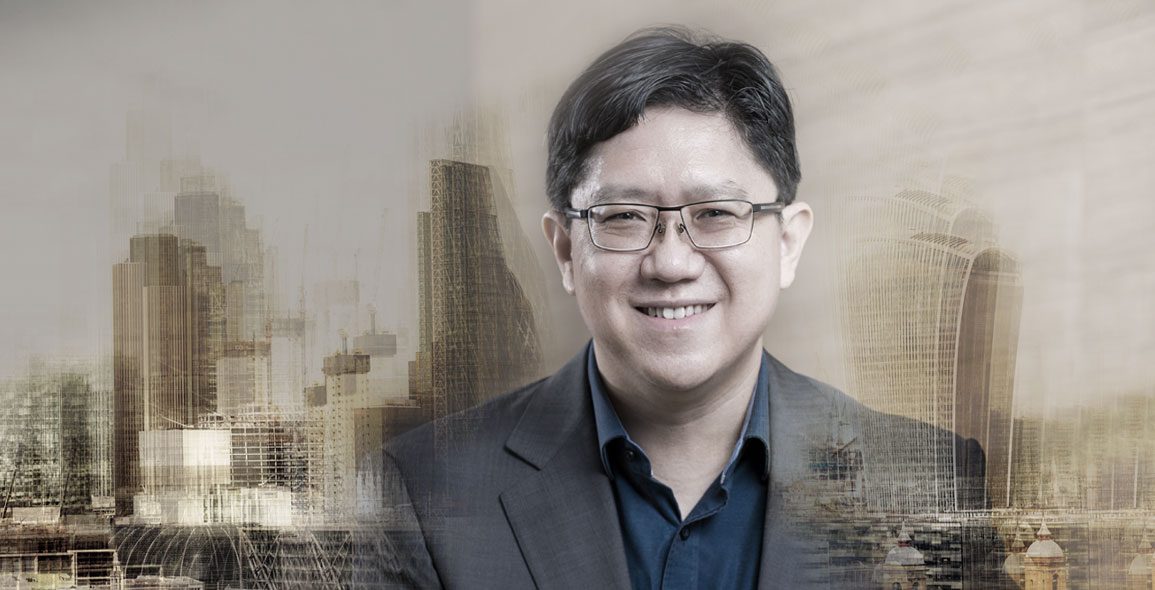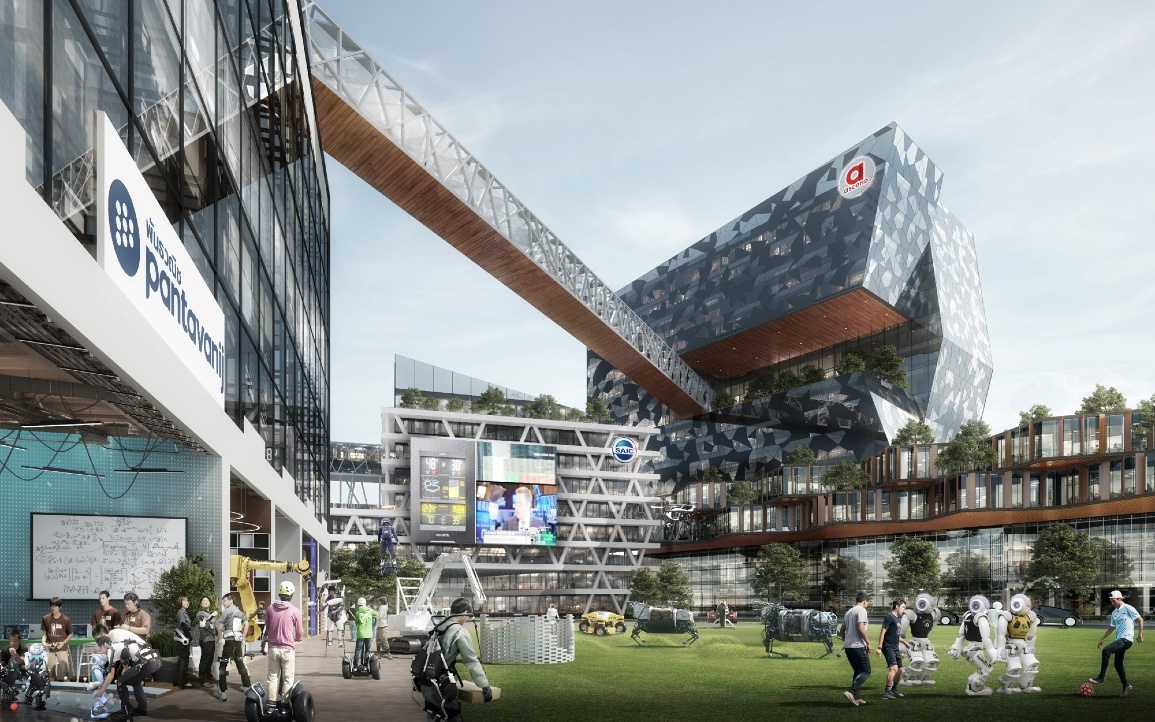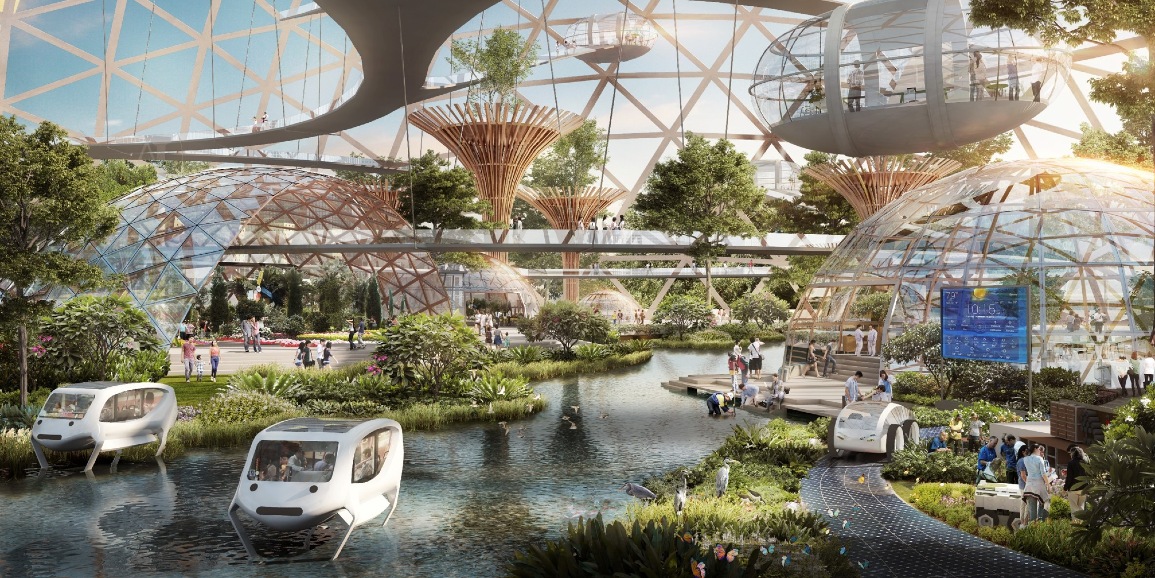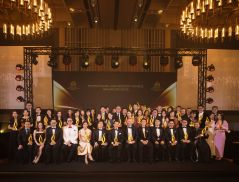
Many people debated if COVID-19 is a black swan event.
The author of the 2007 bestseller book of the same name, Nassim Nicholas Taleb, recently said that it is not because predictions and warnings of the next epidemic, or even pandemic had been raised by many over the years.
There are three attributes of a black swan event: It is an outlier, i.e. unprecedented; it carries an extreme impact; and it will be normalised after happening.
The fact that epidemics and pandemics have happened before, e.g. the Spanish flu in 1918, SARS in 2003 and MERS in 2012 would, as Taleb puts it, disqualifies COVID-19 as a black swan event.
Nonetheless, there is no doubt that its impact is globally significant and perhaps the more pertinent question is, will it become normalised? What is its far-ranging impact on society and how will it change our lives as we know it today?
While it is premature at this stage and certainly impossible to know with certainty what the changes are, it will be useful if we could imagine the possible scenarios and be mentally and psychologically prepared for what lies ahead.
Three Possible Scenarios
Typically, there are three possible scenarios: A best-case scenario, a worst-case scenario and an in-between scenario that probably reflects the reality that often lies between the extremes.
In Scenario 1, which is that of the best-case scenario, a range of effective vaccines is successfully developed in the near future. COVID-19 is eradicated or brought under tight control. Humanity is victorious, yet again, against a highly-contagious disease as we have been over polio, smallpox and measles. As a result, life is back to “normal” – no more social distancing, wearing of masks and telecommuting for work.
Scenario 2 is a worst-case scenario. COVID-19 becomes ever mutable and human bodies do not develop sustained immunity after infection and recovery. As a result, a pervasive pandemic endures because global herd immunity is impossible to achieve. The outbreak becomes unstoppable and worst, COVID-19 mutates to more lethal strains.
Scenario 3 is a somewhat in-between scenario. COVID-19 is under control but not eradicated, and some control measures become part of our life. As a result, new personal habits and social norms have emerged, as well as governance, businesses and the built environment that supports them. Periods of normalcy means social distancing and split teams, interspersed with occasional periods of circuit breaker activation.
This article focuses on Scenario 3, as some of the preparedness will be relevant even if the best case scenario unfolds over the next few months.
In this new reality, what we have experienced in the recent months in terms of social distancing, face mask regime, telecommuting, distance learning and depending on e-commerce for food and retail, will be the new norm.
New Norms in a Society in Co-existence with COVID-19
Many assumptions based on old norms that we have taken for granted will be seriously challenged, if not changed forever.
They may not be all bad; the needs from the new norms and assumptions will drive innovation and technology towards transformation that was not possible before.
In the process, new opportunities will rise. Some of the areas that will undergo transformation are urban density, business, work, homes, logistics, healthcare, education, travel and real estate.
DENSIFICATION REDEFINED: In land-scarce Singapore, we will always pursue high-density development. In the past, this was always associated with crowds, high footfall, social vibrancy, buzz, energy and, where appropriate, mixed with a diverse range of services that bring synergy and convenience. All of a sudden, in the face of the need for social distancing, these norms are ruthlessly overturned.
To live with COVID-19 as part of our life, footfall at retail malls and public places such as libraries may be regulated, and smart solutions to manage visitors may be implemented to meet regulatory requirements as well as to assure visitors.
However, human beings are social in nature, and the need to meet each other in conducive public places will not go away. As a result, premises may operate over an extended period to avoid high peaks and even out the visitors. This may usher in a new era of high-density development with low- or moderate-density activities, augmented with technology and online, virtual participation.
Consequently, it may help solve other problems, such as de-congest traffic, improve air quality and curb unnecessary consumption and waste. In the process, we may reclaim productivity losses due to traffic congestion and open up new avenues to address health and environmental issues.
DISTRIBUTED COLLABORATION IN KNOWLEDGE WORK: Technology has made remote working feasible for at least a decade or so, but it has not really become a predominant form of work. The supposedly compelling benefits advocated by its proponents, such as reducing commuting, reducing office space needed hence lowering rental cost, and better work-life balance have always been challenged by arguments of lower productivity, lack of face-time communication, challenges in social engagement etc.
All of a sudden, COVID-19 kicks in and telecommuting is enforced. It becomes a new norm and is not expected to go away soon. A sustained period of collective, community-wide remote working may just be the impetus for new work habits to be developed, processes and systems to be put in place, to catch up with the technology that had been available all this while.
Thereafter, some sectors may embrace remote work as its dominant mode. In particular, knowledge work will become more de-centralised and distributed, with new ways and technological tools to collaborate effectively.
Other than working from home, which may not be suitable for some due to a variety of reasons like the lack of space, a new trend may be for larger organisations to move away from a centralised workplace to having two or more district offices.
Instead of being functionally organised, each may be cross-functional, supported by hot-desking and a diverse range of workspaces. Decentralisation allows the organisations the flexibility to clean and sanitise each district office in isolation in case staff are detected to have contracted COVID-19.
For smaller organisations that do not require several district offices, they may increase the utilisation of co-working spaces. For companies that provide public-facing services, a new norm may be staggered work hours, which supports the de-densification of activities.
MIXED-USE HOMES: Small Office Home Office (SOHO) was a popular marketing trend a few years ago, although there is a lack of information as to how many buyers actually do use them as home offices. The rising practice of working from home may be the missing catalyst to renew the demand for SOHOs.
During the circuit breaker, as people were working and learning from home en masse, many families discovered that their homes were not set up for working and learning activities. High-density cities in particular, are faced with expensive real estate costs that have resulted in smaller residential apartments. As a result, family members jostled for the limited space and facilities.
This may drive a new trend of buyers and upgraders looking for larger apartments, if they can afford it. For others, technology may offer solutions to mitigate spatial constraints. For example, researchers from MIT have proposed the idea of CityHome, in which robotic furniture could be moved at the press of a button to be reconfigured for different ergonomics and functions: Office, bedroom, social space etc.
FUTURE OF RETAIL: Amid the phenomenal growth of online sales and pushback of in-store retail through emphasising physical tactility and social experiences, the pandemic situation forced everyone to hunker down to shop online and focusing only on buying essentials. We are fortunate that e-commerce has somewhat matured, providing a viable channel for us to purchase food and products remotely.
However, in the “new normal” of having to live with COVID-19, the entire logistic value chain will have to be resilient, including having last-mile delivery that is virus-proof. We cannot risk the delivery personnel becoming the weakest link in spreading the virus in the community.
This may push maturing technology beyond the commercial barrier towards wide-scale adoption of robotic delivery, supported by advanced applications of AI and big data to manage logistic traffic and certainty of delivery.
On the other hand, customers demanding a better retail experience beyond the essentials may result in physical stores becoming thematic experience centres, with footfall being controlled through appointment-only visits. The in-store experience could be enriched by virtual, simulated and interactive experiences with virtual and augmented reality, providing contextual information for a better decision-making process.
 District centres in the near future will have high-density, mixed-use developments with low-density, spaced-out activities, supported by visitor-ship management to avoid peaks and over-crowding. Co-working offices, retail, education, healthcare and other facilities that meet the people’s needs are co-located in the district centres within short travel distance by personal mobility devices. Robotics and automation will help to reduce reliance on human labour.
District centres in the near future will have high-density, mixed-use developments with low-density, spaced-out activities, supported by visitor-ship management to avoid peaks and over-crowding. Co-working offices, retail, education, healthcare and other facilities that meet the people’s needs are co-located in the district centres within short travel distance by personal mobility devices. Robotics and automation will help to reduce reliance on human labour.
REAL ESTATE RETURNS AND VALUATION: Remote work, social distancing measures, crowd control, visitor-ship management, de-densification of activities and other responses to pandemic control that we have come to expect thus far will certainly impact the real estate performance in profound ways. Expect the model of equity return and valuation to change in ways that are still unclear today.
Property prices may be stagnant or enter a period of slow growth. This is not necessarily a bad thing. Runaway property prices have been a cause for concern and even unrest in many cities. The new normal may present a window of opportunity in which property and rental costs appreciate in a gradual and sustainable rate, allowing a diverse range of businesses and social enterprises that would have otherwise been eliminated by high costs to thrive.
HEALTHCARE: We are fortunate that after learning from SARS in 2003, Singapore has prepared ourselves by setting up the National Centre of Infectious Disease (NCID) and put in place various biomedical research programmes. They have immensely enabled our capabilities to fight the ongoing COVID-19 war.
However, COVID-19 has also brought about new challenges different from SARS and earlier episodes. As a matter of fact, the global response in 2003 brought SARS transmission under control after a few months, with a total of 8,439 cases. With the worldwide propagation at the early stages, COVID-19 has already infected about 1.5 million people by early-May, after about six months from the initial outbreak, and those numbers continue to rise.
One difference about COVID-19 is that it is far more contagious, has longer incubation periods and may be transmitted by patients without exhibiting symptoms, which exacerbates the situation. This is compounded by the fact the world is far more globally-connected today, which facilitates viral transmission across borders.
Whereas many of the people falling victim to SARS were healthcare workers, the healthcare frontline to fight COVID-19 is now far more extended due to the ease of community spread. Hence, COVID-19 may lead to a structural shift in the healthcare system.
The infectious disease unit may become a 24-hour, patient-fronting function in every general hospital, similar to the A&E department today. Healthcare facilities will have to cater to flexible conversions of typical wards to containment wards to respond to periodic surges in patients due to COVID-19 and other pandemics.
In addition, a wide range of healthcare facilities and programmes specific to managing pandemic may evolve. For example, district level containment facilities to house healthy patients in isolation, while allowing them to work remotely will be needed.
As the aged are more vulnerable to COVID-19, aged care and dementia institutions are at risk of becoming pandemic clusters. The design and management practice for the institutions will need to be updated to mitigate the risks. For example, staff working for the institutions will have to be screened regularly to lower the risk of infection. The aged may also be organised in clusters and minimise contact between clusters to lower the chances of cross-infection. For aged and patients with chronic illness who are staying with families, home visits or telemedicine and any other means of minimising their exposure to community transmission will be needed.
EDUCATION INNOVATION: The advent of the Information Age and Fourth Industrial Revolution have prompted many proponents to advocate that education needs to be reinvented. There is a need now, more than ever, to prepare students to have the mindset and skillset of lifelong learning, exposure to diverse learning pathways, as well as different modes of learning, such as online learning, virtual institution, bootcamp courses and internships.
However, while online learning was at best a supplement to mainstream modes of education, the circuit breaker enforcement and similar control measures in other nations has turned online learning into the dominant mode of learning. Both the benefits and limitations of online learning were brought into the limelight.
Some of the issues to solve include the social challenges of digital divide, computer literacy, and learning adaptability among the students. In the longer run, we also need to ensure that new generations of students are able to build up proper habits and abilities to self-motivate, manage time and relate to others socially.
Moving to online learning is only the start. The change may catalyse education innovation that engages students through digital education, learning anywhere and anytime through gamification, multi-media, VR and AR, to acquire self-directed learning habits. The change does not mean that the schools and universities are obsolete.
On the contrary, the spatiality and experiences that anchor the students’ sense of place and community belonging in the school campus environment will be ever more important. To do so, the education premises must embrace “smart” in its core; for example, having a digital twin version of it that is pervasive on the web that complements and reinforces the physical twin, particularly during periods of pandemic outbreak where social distancing measures have to be administered.
Architects have an innate ability to create positive relationships between people and the spatial environment. To continue to be relevant, we, as design integrators, must now also consider how physical spaces may be mirrored or serve as the anchor for digital solutions and virtual environments. CPG Consultants, for example, has started to co-develop digital master plans with clients and technology partners. Such projects synergise with the physical master plan of a campus and estate developments, providing a roadmap to guide the client’s adoption of digital solutions to improve processes and operations in keeping with the physical spatial quality and constraints.
BUSINESS AND SUPPLY CHAIN ‘GLOCALISATION’ THROUGH INDUSTRY 4.0: For about two years before the COVID-19 outbreak, the US-China tariff hike and trade wars were already putting strain on global supply chains. COVID-19 became the last straw to break the camel’s back. Several events show up blatantly clear that the current global supply network is highly vulnerable.
First, when China was in lockdown, the world experienced supply shocks. Subsequently, as the virus spread to other regions, ugly episodes of demand shock took placed, in which medical supplies were regarded as strategic resources and hogged by nations. As businesses seek to relocate or diversify out of China in response to the US’s trade war policy, they will now also consider the need for resiliency in their supply-chain strategy.
The pursuit of production efficiency led to China becoming the world’s factory today due to many valid reasons, such as its strong business ecosystem, relatively low labour cost and high speed of production. However, relying on one single source of supply is not resilient, as clearly demonstrated by the COVID-19 outbreak.
Businesses now have to consider diversifying their supply chain to multiple sources, even if it costs more and requires more resources. Many analysts had forecast that business strategy in the new normal will comprise of “China +1”, in which the main supply chain in China is supplemented by an alternative supply chain in India, Southeast Asia or other alternatives.
The idea centres on the need to shift at least part of the supply chain away from China. Such thoughts had often been put off by businesses because it is impossible for other nations to measure up to the productivity and competitiveness of China’s factories and production ecosystem. However, in the new normal, resiliency as a consideration may over-ride the cost consideration.
Multinationals and global businesses may also enter a new phase of glocalisation, in which their local businesses are empowered to operate more independently, and thereby reduce the reliance on business travels.
The relocation of businesses to Southeast Asia, including Singapore, will present new opportunities. For Singapore, we will have to overcome the constraints of high land cost, manpower cost and manpower shortage. However, our constraints may present an impetus for us to embrace Industry 4.0.
Industry 4.0 factories are smart factories, relying on automation, robotics, data and IoT to streamline workflow and manufacturing process. As machines rely on a wide range of advanced sensors, these smart factories do not need a high level of lighting for human eyes, and are also known as dark factories. In the context of COVID-19, automated factories also means that there is lower risk of production stoppage and human-to-human viral transmission.
Industry 4.0’s form of manufacturing is likely to encourage a diverse range of advanced manufacturing companies to set up labs and workshops to be co-located in multi-tenanted, high-density, highly-automated fabrication hubs, forming local fabrication eco-systems responsive to urgent demands and short production runs. Industry 4.0 architecture may not appear very different from what we have today, but its impact is already self-evident in the built environment sector. Programmes in Singapore’s Construction Industry Transformation Roadmap, such as Design for Manufacturing & Assembly (DfMA) and Integrated Digital Delivery (IDD), when implemented fully, are Industry 4.0 being applied to the construction sector.
Conclusion
In 2017, Singapore set up the Future Economy Council (FEC) to spearhead the next wave of economic transformation. Along the way, 23 Industry Transformation Maps (ITM) were developed, grouped under six clusters, one of which is the Built Environment Cluster.
The Built Environment Cluster comprises four ITMs, namely Construction, Real Estate, Security and Environmental Services. Some key areas of focus under the Construction ITM include Design for Manufacturing & Assembly (DfMA), Integrated Digital Delivery (IDD) and Green Buildings.
DfMA involves designing in ways that facilitate easy, clean and safe factory manufacturing practices (and hence offers potential for robotic and automation), followed by assembly on site. IDD seeks to integrate the processes of the entire construction value chain through digitisation, info-communication and Internet-of-things technologies. Green Buildings continues to elevate our built environment’s ability to consume less resources and mitigate climate change.
To enable the economy, Singapore is also underpinned by the Smart Nation vision, embracing technological disruptions proactively to enable the way we live, work and play. Countless smart nation programmes are being rolled out.
 Resilient, self-sustained, local communities with smart-eco built environment that support spaced-out, 24/7 activities. Environmental and air quality within the district is actively monitored with smart sensors. With a significant amount of food and products produced locally through smart farming and 3D printing, discretionary traveling beyond the community district and other countries only when required, the carbon footprint is much reduced.
Resilient, self-sustained, local communities with smart-eco built environment that support spaced-out, 24/7 activities. Environmental and air quality within the district is actively monitored with smart sensors. With a significant amount of food and products produced locally through smart farming and 3D printing, discretionary traveling beyond the community district and other countries only when required, the carbon footprint is much reduced.
Looking back, the digital transformation has not been easy. Many built environment companies find themselves between a rock and a hard place: On one hand they face the high costs of operation, talent and resource shortages, and the high pressure of project demands. On the other hand, they need to invest and adapt to new processes and technology.
Many also wonder whether the adoption of technology and smart solutions is seeking progress simply for the sake of it. The unfortunate and unexpected arrival of COVID-19, the manner it wreaked havoc on migrant worker dormitories and the new societal demands for change and opportunities may have provided the raison d'être for the built environment industry transformation.
If one believes that history repeats itself, the Black Death in the 14th century did result in wide-ranging societal changes that led to the emergence of the Renaissance. COVID-19 will eventually come to pass. However, we should also not let a serious crisis go to waste. As the industry transforms and obsolete businesses are displaced, transformation will bring new needs and opportunities, which will demand a new genre of built environment.
The question is will we be ready for that?
Read what other architects think about how COVID-19 will impact our built environment in d+a's Issue 116 (June/July 2020), available for sale on Magzter.


 Share
Share








